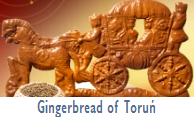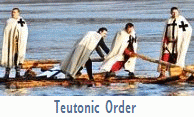|
The programme lasts 40 minutes and presents interesting information about the Solar System. Funny dialogues, great music and fantastic animations (including the scene when fragments of a comet bombarded atmosphere of Jupiter) are the unquestionable advantages of this show. The starry night sky is one of the most beautiful sights that humanity has been able to admire throughout history. Look – they may appear to be only dots on a black background, but there probably isn’t anybody who doesn’t like looking at this apparently banal picture. You feel the beauty and vastness of Space… Amongst the stars some bright points are dominant, immediately drawing attention to themselves. It’s no surprise that they were distinguished against the background of the others. These are the planets. Looking at the starry sky, you can make out not only a difference in their brightness, but also in their colours! Mars usually has a reddish hue. Jupiter is milky-white, and its radiance is so bright that you can’t miss it. Saturn isn’t so bright, but you can easily make it out too on a clear night. The clearest object has, however, always been Venus. Its pure silvery-blue radiance was often dominant above the horizon. It’s not surprising that this planet is associated with a beautiful woman. The reddish Mars was a god of war, while the gleaming Jupiter was the greatest of the ancient gods. The present picture of the Solar System has changed greatly since ancient times. Today we see the planets as globes of neighbouring worlds orbiting the Sun in the centre. The closest is Mercury, further are Venus, Earth and Mars. Even further are Jupiter and Saturn. In the times of Copernicus, this is where the Planetary System ended because scholars could see no further with the naked eye. It wasn’t until two centuries later that William Herschel discovered (with the aid of a telescope) the next planet – Uranus. At the beginning, he called it Planet George in honour of his king. Fortunately, this name did not catch on, for tradition prevailed. They went back to the names of the gods. Today the seventh planet is called Uranus, even though the Greek gods long ago descended from the Pantheon. The eighth planet from the Sun is Neptune. Until recently, schools taught that the last one is Pluto but, because of its small dimensions and unusual orbit, a decision by the International Astronomical Union of 2006 removed Pluto from the list of planets. So what are planets? Can we say exactly whether a body is a planet or not? Of course, the Astronomical Union created a definition: A planet is a body which: 1. is in orbit around the Sun, 2. has a shape which is almost round, 3. cleared the space in the neighbourhood of its orbit of smaller bodies. The eight planets are Mercury, Venus, Earth, Mars, Jupiter, Saturn, Uranus and Neptune. In accordance with the resolutions of the Astronomical Union, small bodies circling around the Sun are regarded as dwarf planets, moons, asteroids, comets and other cosmic debris. Eight planets orbit the Sun. The first four are rocky bodies. The next four are gas giants. That’s what planets are!
|
| All rights reserved Toruń 2005-2009 | About us | CenterMedia |




















